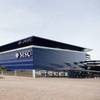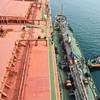Wrong Directions: A Recipe for Failure
This U.S. Coast Guard safety alert addresses critical concerns uncovered during an ongoing marine casualty investigation and should be of vital interest to Ship Builders, Classification Societies, Owner / Operators and others involved with vessel operations.
A machinery space fire onboard a relatively new vessel was effectively responded to and extinguished by the vessel’s quick response team firefighters using portable extinguishing equipment. However, before it was declared completely extinguished and approximately five hours after the fire started, the master of the vessel made the decision to release CO2 from the vessel’s fixed firefighting system. It failed to operate as designed. Subsequently, crewmembers were unable to activate it manually and CO2 was never directed into the machinery space.
While the casualty investigation remains ongoing, the following issues were discovered that could have negatively affected the crew’s emergency response and may have contributed to the CO2 system failure.
Shipyard commissioning test procedures appear to differ from procedures documented in the vessel’s Firefighting Instruction Manual (FIM). Commissioning procedures indicate that the discharge line selection to a specific protected zone should be made prior to releasing the gas contrary to the directions in the FIM.
• The FIM refers extensively to a Control Panel (left following image) that differs vastly from the one onboard the vessel (right following image).
• The FIM states that the CO2 Release station is on the Starboard side of the vessel when In fact it is located on the Port side.
• The FIM incorrectly uses the word “Pull” when it should read “Turn” in reference to the operations of valves.
• The FIM contains the following confusing language “Once the fire has been extinguished make sure that the temperature has decreased before investigate the area same time is needed to wait hours.”
• The FIM references elements of an Emergency Shut Down (E.S.D.) graphic on numerous occasions. However, the graphic display was not found on the vessel.
• The FIM contains photographs of the internals of the CO2 release stations that appear to differ from actual CO2 release stations onboard the vessel.
• The CO2 release stations installed on the vessel have instructional placards that refer to elements of a completely different control panel then the one used onboard the vessel.
• Shipyard piping schematics and drawings do not appear to match the actual installation. The schematic at the right shows the “A valve” for the Aft Machinery Space in the center position vice the bottom position as it is installed on the vessel.
Because of these and other issues, the United States Coast Guard strongly recommends that vessel builders / shipyards, classification societies, insurers, owners / operators, system service personnel, and others involved with these systems:
• Ensure that all supporting documentation, piping schematics, plans, manuals, component labeling and instructions are consistent with each other and relevant to the systems, equipment, and components installed onboard the vessel.
Developed by the U.S. Coast Guard Headquarter’s Office of Investigations and Analysis, Washington, DC. Questions may be addressed to: [email protected]












